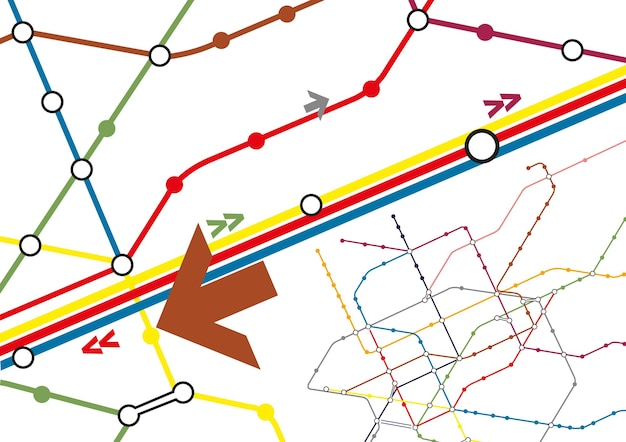Travel Hacking on a Budget: 5 Simple Hacks for Savings

Anúncios
Travel hacking on a budget involves strategically leveraging loyalty programs, credit card rewards, and smart booking techniques to significantly reduce travel expenses, enabling more frequent and affordable adventures without compromising experience.
Anúncios
Embarking on a journey can be exhilarating, but the financial aspect often places it out of reach for many. However, with strategic **Travel Hacking on a Budget: 5 Simple Hacks to Save Money on Your Next Trip**, the dream of exploring new destinations can become a tangible reality, even for those with limited funds. This guide dives into actionable strategies to make your travel aspirations economically viable.
Mastering credit card rewards and loyalty programs
Traveling on a budget often begins before you even book a flight, with smart financial planning and strategic use of credit cards and loyalty programs. Many perceive credit cards merely as tools for spending, but in the hands of a savvy traveler, they transform into powerful instruments for accruing free flights and hotel stays. The key lies in understanding how these systems work and aligning them with your spending habits. It’s not about spending more; it’s about optimizing the spending you already do.
Building credit card points means understanding the nuances of different cards. Some offer generous sign-up bonuses, providing a significant lump sum of points after meeting initial spending requirements. Others specialize in specific categories like travel, dining, or groceries, offering accelerated earning rates on these purchases. Diversifying your card portfolio to capitalize on these varied benefits can exponentially increase your points accumulation. For example, using a dining-focused card for restaurant bills and a travel-focused card for everyday expenses can quickly add up.
Anúncios
Maximizing sign-up bonuses
Sign-up bonuses are arguably the fastest way to accumulate a large sum of points or miles. These are typically offered to new cardholders who spend a certain amount within the first few months of account opening. The amounts vary wildly, from 20,000 to over 100,000 points, which can often translate into several domestic flights or a few nights at a premium hotel. Before applying, it is critical to evaluate if you can comfortably meet the minimum spending requirement without overspending or going into debt. Meeting these bonuses ethically and strategically is the cornerstone of effective travel hacking.
- Research cards with high sign-up bonuses aligned with your travel goals (e.g., airline miles for flights, hotel points for stays).
- Plan large purchases or everyday spending to meet the minimum spend requirement without accruing debt.
- Understand the redemption value of points before applying; not all points are created equal.
- Be mindful of annual fees and whether the value of the bonus outweighs the cost.
Leveraging loyalty programs
Beyond credit cards, joining airline and hotel loyalty programs directly can yield substantial benefits. These programs reward frequent travelers with points, elite status, and exclusive perks. Even if you don’t travel constantly, signing up for these programs is a no-brainer, as points can often be earned through partners (e.g., car rentals, online shopping portals) or through co-branded credit cards. Elite status, achieved by accumulating a certain number of nights or miles, can unlock benefits like complimentary upgrades, late check-outs, and lounge access, significantly enhancing the travel experience without additional cost.
Strategic flight booking: flexible dates and alternative airports
The cost of airfare often represents a significant portion of a travel budget, making it an ideal target for cost-saving strategies. Traditional wisdom suggests booking far in advance, but the dynamic nature of airline pricing means that flexibility can be your greatest asset. Instead of fixating on specific dates or destinations, a more adaptive approach to searching for flights can uncover surprisingly affordable options. This involves being open to flying on less popular days, considering alternative airports, and utilizing price comparison tools effectively.
Finding the cheapest days to fly
Airline pricing algorithms are complex, influenced by demand, time of year, day of the week, and even the time of day you search. Generally, flying mid-week (Tuesdays, Wednesdays, and Saturdays for some domestic routes) tends to be cheaper than weekend travel. Departures and arrivals during unpopular hours—very early mornings or late nights—also frequently offer lower fares. Using “flexible date” search options on flight comparison websites can quickly reveal the cheapest days to travel to your desired destination, sometimes saving hundreds of dollars.
- Utilize “flexible date” search tools on sites like Google Flights or Skyscanner.
- Consider flying on Tuesdays, Wednesdays, and Saturdays for domestic and some international routes.
- Explore red-eye flights or very early morning departures which are often less expensive.
- Be aware of peak travel seasons and major holidays, which almost always result in higher fares.
Exploring alternative airports
Many major cities are served by more than one airport. While the primary international airport might be the most convenient, smaller, regional airports in close proximity often serve budget airlines or have lower landing fees, translating to cheaper tickets. Before booking, take a moment to check flights into and out of airports within a reasonable driving or public transport distance of your final destination. The savings on airfare can often outweigh the cost and inconvenience of an extra short transfer. This simple step is frequently overlooked but can lead to significant budgetary relief.
Sometimes, the savings can be so substantial that it makes sense to fly into a larger hub airport and then take a short, cheap regional flight or train connection to your actual destination. This multi-leg approach requires a bit more planning but can open up a wider array of flight options and price points. Always factor in the total cost and time for transfers when evaluating these options.

Accommodation hacks: beyond traditional hotels
Accommodation can quickly become one of the most substantial expenses in any travel budget, often rivaling or even exceeding flight costs. While traditional hotels offer convenience and certain amenities, exploring alternatives can lead to considerable savings and often a more authentic travel experience. Thinking outside the hotel box encompasses a variety of options, from short-term rentals and hostels to house-sitting and even volunteer work that includes lodging.
Embracing short-term rentals and hostels
Platforms like Airbnb, Vrbo, and HomeAway have revolutionized the accommodation landscape, offering homes, apartments, and unique stays at various price points. For families or groups, a short-term rental can be significantly cheaper than booking multiple hotel rooms, offering the added benefit of kitchen facilities for self-catering, further reducing food expenses. Hostels, on the other hand, are perennial favorites for solo travelers and budget-conscious adventurers. While often associated with dormitories, many hostels now offer private rooms, combining affordability with a social atmosphere and communal amenities.
House-sitting and volunteering for free stays
For the truly intrepid budget traveler, house-sitting offers the ultimate hack: free accommodation in exchange for looking after someone’s home and pets while they are away. Websites like TrustedHousesitters connect homeowners with reliable sitters. This approach requires flexibility and a willingness to care for animals, but it can open doors to stays in desirable locations for extended periods without paying a dime for lodging. Similarly, volunteer programs abroad, particularly those focused on eco-tourism, farm work, or community development, often provide free room and board in exchange for a set number of work hours per day. This not only saves money but also offers an immersive cultural experience.
Smart dining strategies: eat like a local
Food costs can sneak up on travelers, especially when constantly dining out or opting for tourist-trap restaurants. One of the most enjoyable and often most economical ways to experience a new culture is through its cuisine, but doing so strategically is key to **Travel Hacking on a Budget: 5 Simple Hacks to Save Money on Your Next Trip**. Eating like a local means avoiding overpriced tourist zones and embracing markets, street food, and self-catering.
A crucial first step is to research local food prices and dining customs before you arrive. Use online forums, blogs, and local food guides to identify popular eateries favored by residents, typically found off the main tourist thoroughfares. These places not only offer more authentic flavors but also significantly better value. Consider the timing of your meals; lunch menus are almost universally less expensive than dinner, even at upscale establishments. Eating your main meal at lunchtime can lead to substantial savings over the course of a trip.
Embracing local markets and street food
Local markets are a treasure trove for budget travelers. They offer fresh produce, local delicacies, and often prepared foods at a fraction of restaurant prices. Buying ingredients from a market and preparing some of your own meals, especially breakfast and a light lunch, can dramatically cut down on dining expenses. This is particularly effective if your accommodation includes a kitchen or kitchenette. Street food, prevalent in many parts of the world, is another excellent and often incredibly delicious option. It’s usually prepared fresh, offers authentic flavors, and comes at a very low cost, allowing you to sample a wide variety of local dishes without breaking the bank.
- Visit local supermarkets and farmers’ markets for ingredients to prepare your own meals.
- Explore street food vendors for authentic and affordable culinary experiences.
- Pack snacks and a reusable water bottle to avoid impulse purchases and stay hydrated.
- Dine at local eateries popular with residents rather than tourist-focused restaurants.
Picnics and self-catering
Rather than dining out for every meal, consider the joy and savings of a picnic. Grab some local cheeses, fresh bread, fruits, and cold cuts from a market, and enjoy a meal in a scenic park or by a landmark. This not only saves money but also provides a more relaxed and memorable dining experience. For accommodation with kitchen facilities, preparing simple meals at home is a powerful budget hack. This allows for greater control over your food budget and significantly reduces reliance on expensive restaurant meals, which can quickly deplete your travel funds.
Transportation savings: public transit and walking
Once a traveler arrives at their destination, getting around efficiently and affordably becomes the next financial challenge. Taxis and ride-sharing services can quickly add up, especially in large cities. Smart transportation choices are pivotal for **Travel Hacking on a Budget: 5 Simple Hacks to Save Money on Your Next Trip**. Embracing public transportation, walking, and even cycling not only saves money but also offers a more immersive way to experience a new place, interacting more directly with local life.
Harnessing public transportation
Most major cities worldwide boast extensive and efficient public transportation networks, including buses, subways, trams, and trains. These systems are designed to move large numbers of people affordably and are often significantly cheaper than private transport options. Researching the local public transit system before your arrival, including pass options (daily, weekly, or multi-day passes) and routes to key attractions, can save both money and hassle. Many cities offer special tourist passes that combine public transport with discounts on attractions, providing even greater value. Using public transport means experiencing the daily rhythm of the city, away from tourist bubbles.
The power of walking and cycling
Perhaps the ultimate budget transportation hack is walking. It’s completely free, allows you to observe the city’s nuances up close, discover hidden gems, and get some exercise. Many cities are highly walkable, with pedestrian-friendly zones and scenic routes. Planning your itinerary to group attractions that are within walking distance of each other can save considerable amounts on fares. For longer distances or a different perspective, consider renting a bicycle. Many cities now have bike-sharing programs that are very affordable for short rides, offering a fun and eco-friendly way to explore. It allows you to cover more ground than walking while still being open to the environment around you.
Exploring ride-sharing alternatives
While ride-sharing apps like Uber or Lyft can be convenient, their costs can add up quickly. For solo travelers or those without access to public transit, seeking out local ride-sharing alternatives or even carpooling options can be more economical. Some regions have local car-sharing companies or community ride-share boards that offer cheaper rates than global services. Always compare prices and consider shared-ride options within the apps to split costs with other passengers heading in the same direction. Utilizing these services becomes a last resort rather than a default, particularly for very short distances or when public transit is unavailable.

Utilizing free travel resources and activities
Beyond the core expenses of flights, accommodation, and food, travel costs can escalate with entrance fees, tours, and entertainment. However, countless free resources and activities are available in most destinations for those practicing **Travel Hacking on a Budget: 5 Simple Hacks to Save Money on Your Next Trip**. Leveraging these opportunities allows travelers to enrich their experience without depleting their budget. This often involves a shift in mindset, prioritizing exploration and cultural immersion over traditional paid attractions.
Free local attractions and events
Nearly every city offers a wealth of free attractions, from public parks and gardens to historic walking tours and free museums or galleries (especially on specific days or evenings). Researching these options before your trip can fill your itinerary with enriching experiences at no cost. Many cities also host free festivals, concerts, and public performances, particularly during warmer months. Checking local event listings or tourist information centers upon arrival can uncover these hidden gems. Simply strolling through different neighborhoods, observing daily life, and enjoying the atmosphere also costs nothing and offers invaluable cultural insights.
Leveraging technology for savings
Technology offers powerful tools for free or low-cost travel experiences. Free walking tour apps can guide you through historic districts with detailed commentary, effectively replacing paid tour guides. Offline maps prevent data roaming charges and help with navigation. Podcasts or audio guides about specific locations downloaded beforehand can provide historical context and cultural insights without needing to hire a guide. Many museums offer free audio guides via apps, allowing visitors to explore at their own pace. Moreover, utilizing free public Wi-Fi spots can save on data costs, essential for researching free activities and communication.
Outdoor activities and natural wonders
If your destination boasts natural beauty, embrace it. Hiking trails, beaches, national parks (though some may have entrance fees, many offer free days or are entirely free for certain areas), and scenic viewpoints often provide breathtaking experiences at no cost. Pack suitable gear for outdoor activities, and consider visiting during seasons where entry fees might be lower or conditions more favorable for free exploration (e.g., shoulder seasons for national parks to avoid crowds and higher prices). Engaging with nature is not only free but also often the most memorable part of a trip, offering a refreshing contrast to urban exploration. This approach ensures that you’re experiencing the essence of a place rather than just its commercialized offerings.
| Key Hack | Brief Description |
|---|---|
| 💳 Credit Card Rewards | Optimize spending with bonuses and loyalty programs for free flights/stays. |
| ✈️ Flexible Flights | Search flexible dates & alternative airports for cheaper airfare. |
| 🏠 Alternative Stays | Explore rentals, hostels, or house-sitting for affordable lodging. |
| 🍽️ Local Dining | Eat like a local at markets and street food stalls; self-catering. |
Frequently asked questions about budget travel hacking
No, travel hacking benefits anyone looking to save money on travel, from solo backpackers to families. While some techniques might seem complex, even applying one or two simple hacks can result in significant savings, making travel more accessible and frequent for a wider range of budgets and travel styles.
A good to excellent credit score is crucial for successful credit card travel hacking. Issuers typically require high scores to approve premium travel cards with the best rewards and sign-up bonuses. Maintaining a healthy credit history ensures you qualify for competitive offers and can manage multiple cards responsibly without negatively impacting your financial health.
Absolutely. Travel hacking isn’t exclusively about flights. You can accumulate hotel points through hotel-branded credit cards or loyalty programs, save on accommodation by house-sitting or couch-surfing, and reduce dining costs through smart food choices. Many hacks focus on daily spending optimization rather than just actual travel.
A common mistake is applying for too many credit cards too quickly or not meeting minimum spending requirements responsibly. This can lead to unnecessary debt, lower credit scores, and missed bonus opportunities. Focus on one or two cards at a time, ensure you can meet the spending naturally, and always pay balances in full to avoid interest.
When done responsibly and within the terms of service, travel hacking is ethical. It involves leveraging existing reward systems. Concerns arise when individuals abuse systems, engage in manufactured spending that violates terms, or apply for credit cards they cannot responsibly manage. Responsible travel hacking is about smart financial strategy, not exploitation.
Conclusion
Ultimately, effective **Travel Hacking on a Budget: 5 Simple Hacks to Save Money on Your Next Trip** transforms travel from an occasional luxury into an attainable and frequent pursuit. By adopting these strategic approaches—from leveraging credit card rewards to embracing local dining and transportation—travelers can significantly reduce expenses without compromising on experience. The journey itself becomes part of the financial adventure, opening doors to more destinations and enriching experiences.





